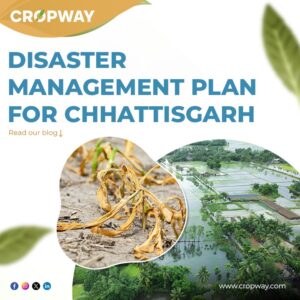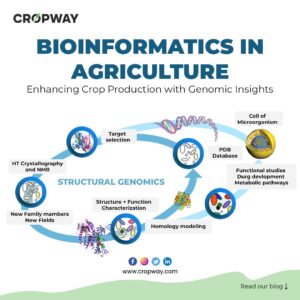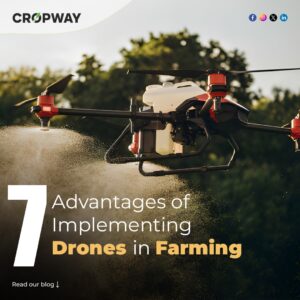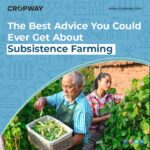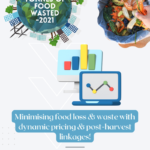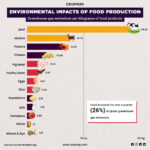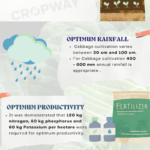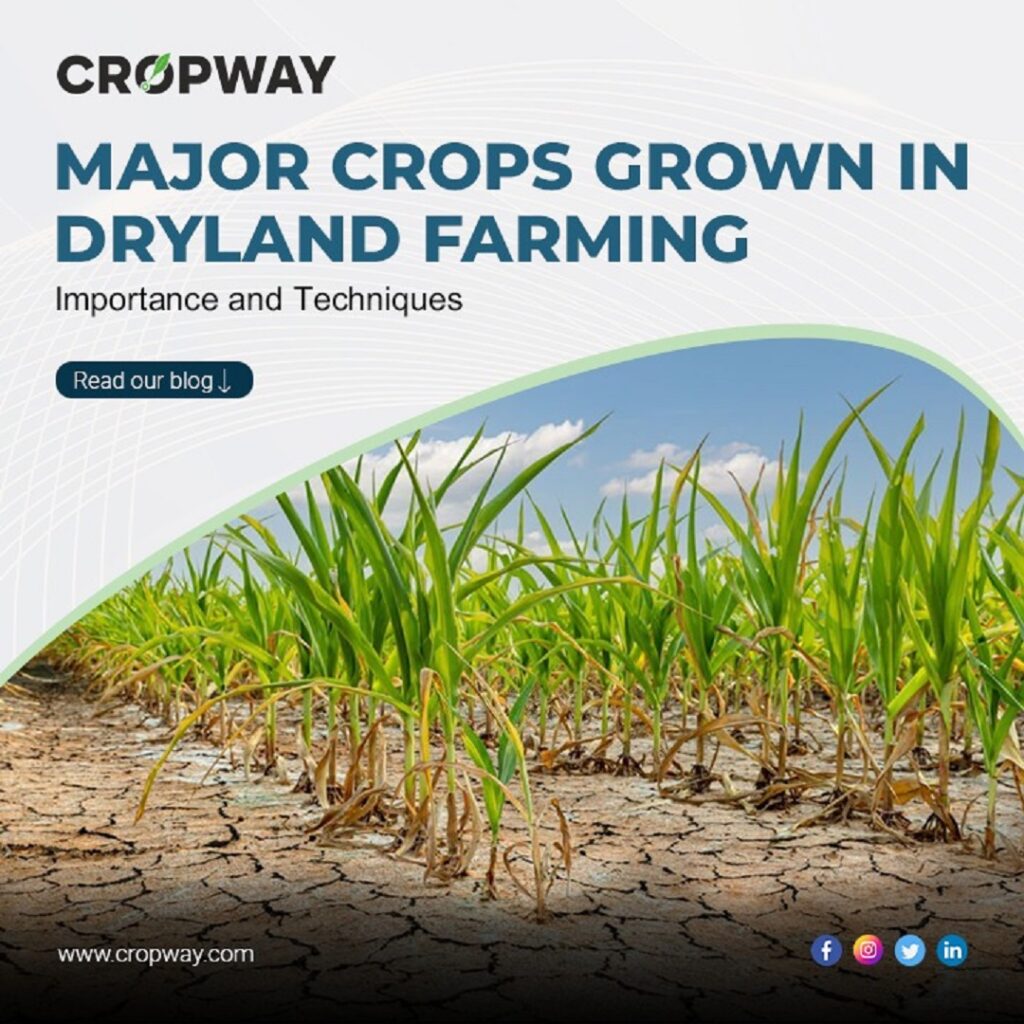
Dryland farming is an agricultural approach adapted to regions with scarce water resources, often receiving less than 20 inches (50 centimeters) of annual precipitation. Successful dry land farming hinges on effective moisture retention in the soil and the careful choice of crops and cultivation techniques to optimize the available water. This approach is vital in semi-arid areas worldwide, demonstrating the importance of sustainable practices to optimize crop yields and food production in regions with limited access to water.
What is Dryland Farming ?
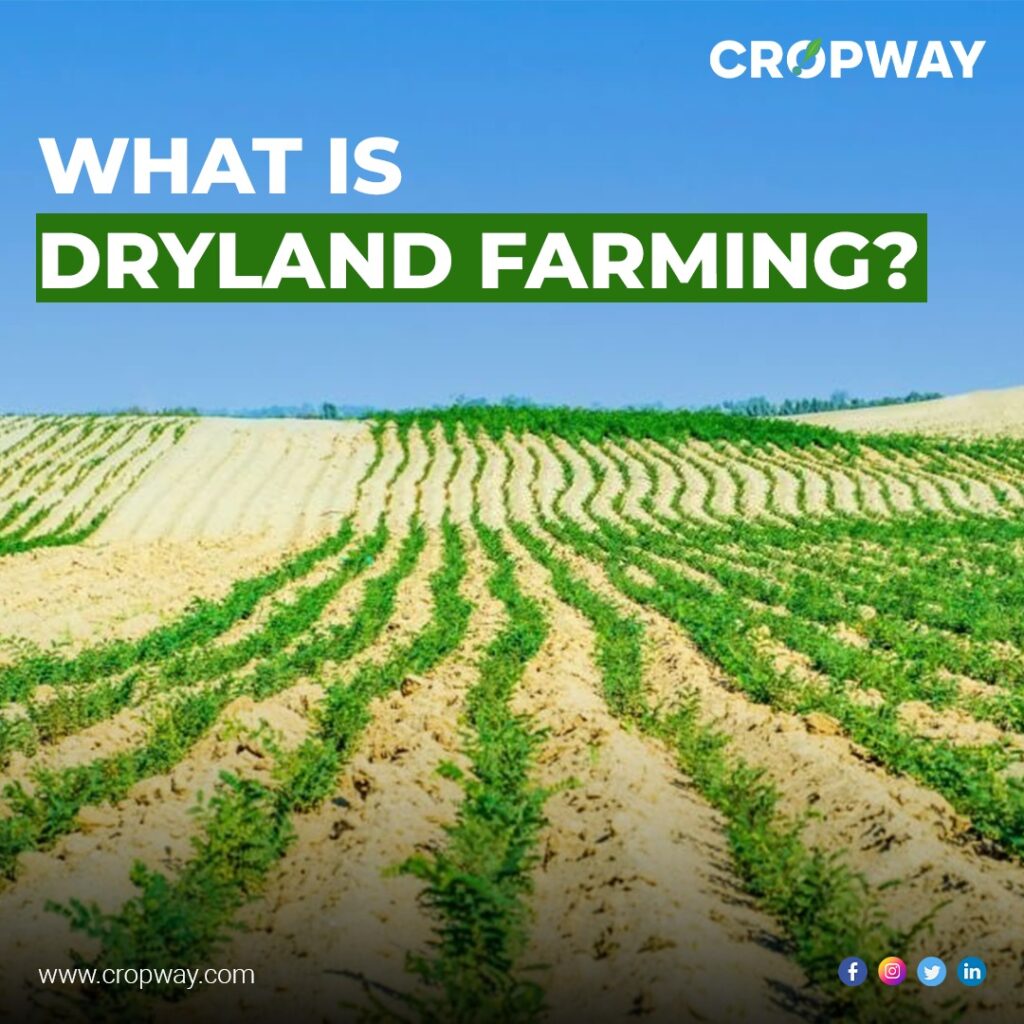
Dryland farming, also known as dry farming, is an agricultural method employed in regions with limited water resources. It involves cultivating crops without relying on irrigation during dry periods, utilizing moisture retained in the soil from previous rainy seasons. Effective moisture management in dryland farming entails weed control and runoff prevention. The optimal soil surface is weed-free but retains enough clods or decomposed organic material to impede runoff and erosion. This sustainable approach allows agriculture to thrive in water-scarce environments while promoting soil health and reducing water consumption.
Crops adapted to dry farming can be categorized as either drought-resistant or drought-evasive. Drought-resistant crops, like sorghum, conserve moisture by reducing transpiration and can temporarily halt growth during dry spells, resuming when conditions improve. On the other hand, drought-evasive crops thrive during less severe heat and drought periods, focusing their growth during more favorable seasons. Typically, dry farming crops are smaller, quicker to mature than their counterparts in humid regions, and require more space to accommodate their water-efficient strategies, ensuring better adaptation to arid conditions and sustainable agricultural practices in water-scarce environments.
Why is Dryland Farming Important?
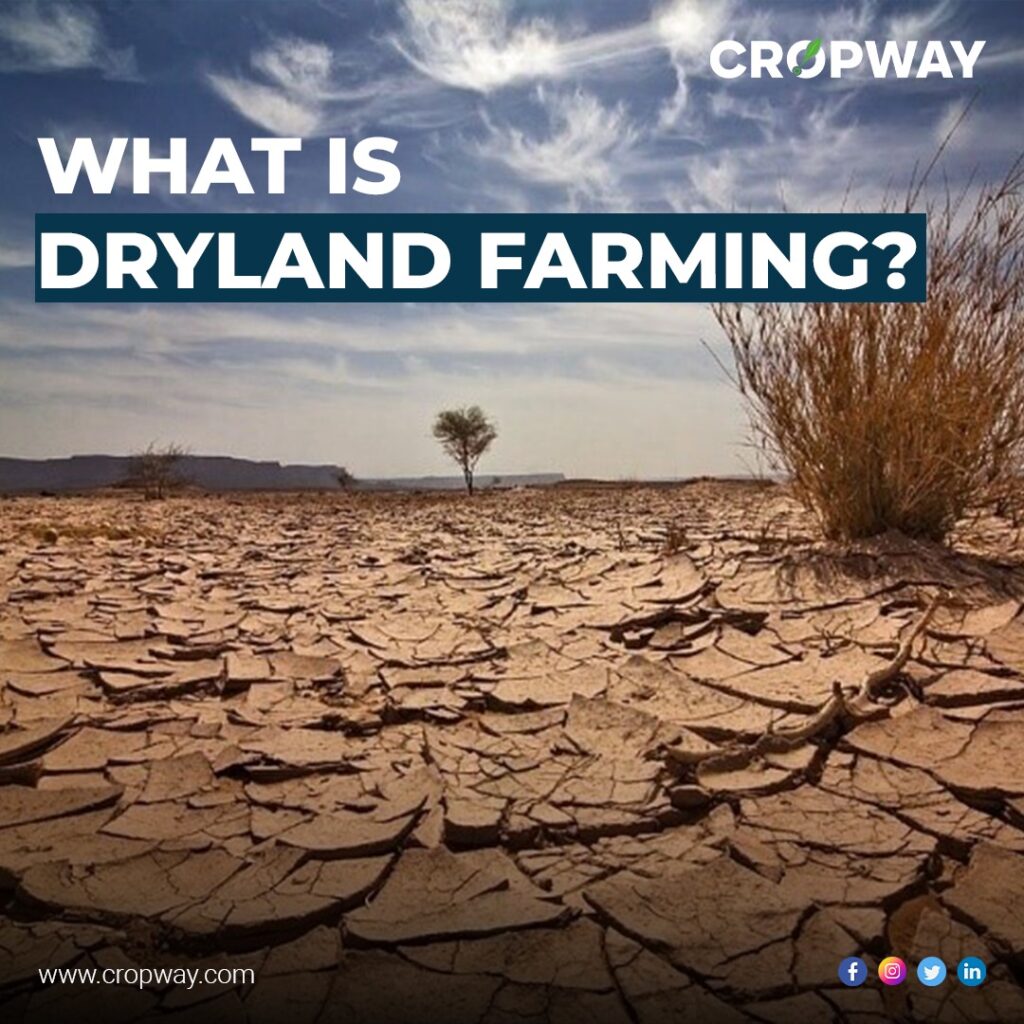
Dryland farming is a crucial agricultural strategy employed in regions plagued by insufficient rainfall to sustain crop growth. Its primary goal is to maximize crop yields with limited water resources, making it vital in areas where irrigation is impractical, and surface water remains inaccessible due to deep water tables. This practice plays a pivotal role in conserving precious water resources, mitigating soil erosion, and promoting sustainability in agriculture.
Dryland Farming Techniques
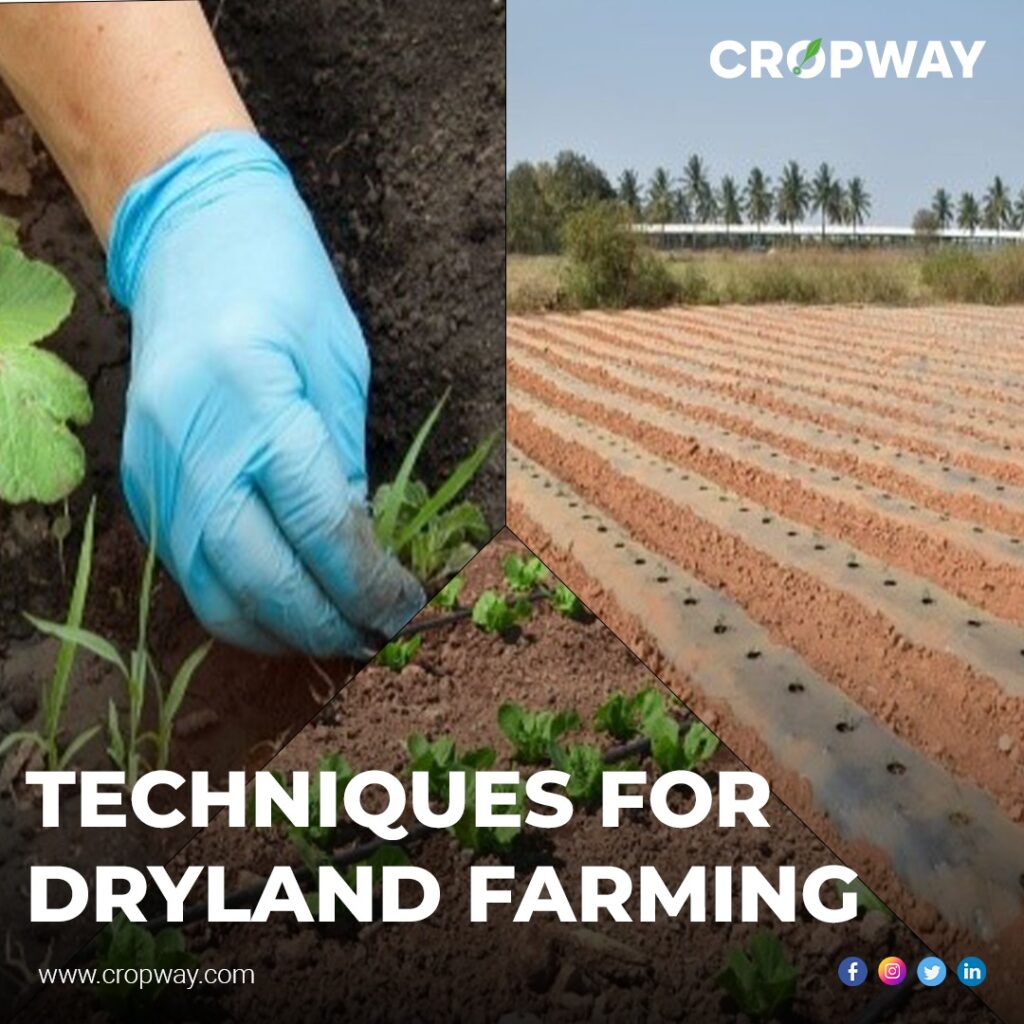
In dryland farming, where water resources are limited and evaporation poses a significant challenge, several vital techniques are employed to enhance water retention and protect crops. One fundamental practice is mulching, wherein a layer of organic materials like straw or hay is spread over the soil’s surface. Mulching acts as a protective barrier, reducing soil moisture loss through evaporation and keeping the soil cooler during hot summer months.Shelterbelts and windbreaks are also crucial components of dryland farming. These are rows of trees or shrubs strategically planted along the field’s perimeter to create a windbreak. They serve a dual purpose by not only shielding crops from wind damage but also reducing evaporation by decreasing wind speed over the fields.
Weed control is essential in dryland farming, as weeds compete with crops for limited water resources. Chemical treatments can be judiciously applied to crop leaves to suppress weed growth, minimizing water loss through competition.
These techniques collectively help dryland farmers optimize water retention, reduce evaporation, and protect their crops, contributing to sustainable and resilient agricultural practices in arid regions.
After harvesting, you can choose to either leave the remains of the harvested crop as stubble mulch or plant a living green manure. Stubble mulch serves as a protective layer, preventing soil drying caused by wind and sun. However, it’s important not to use stubble from the same crop family to avoid promoting disease in the soil.
How to Improve Soil Water Absorption for Dryland Agriculture?
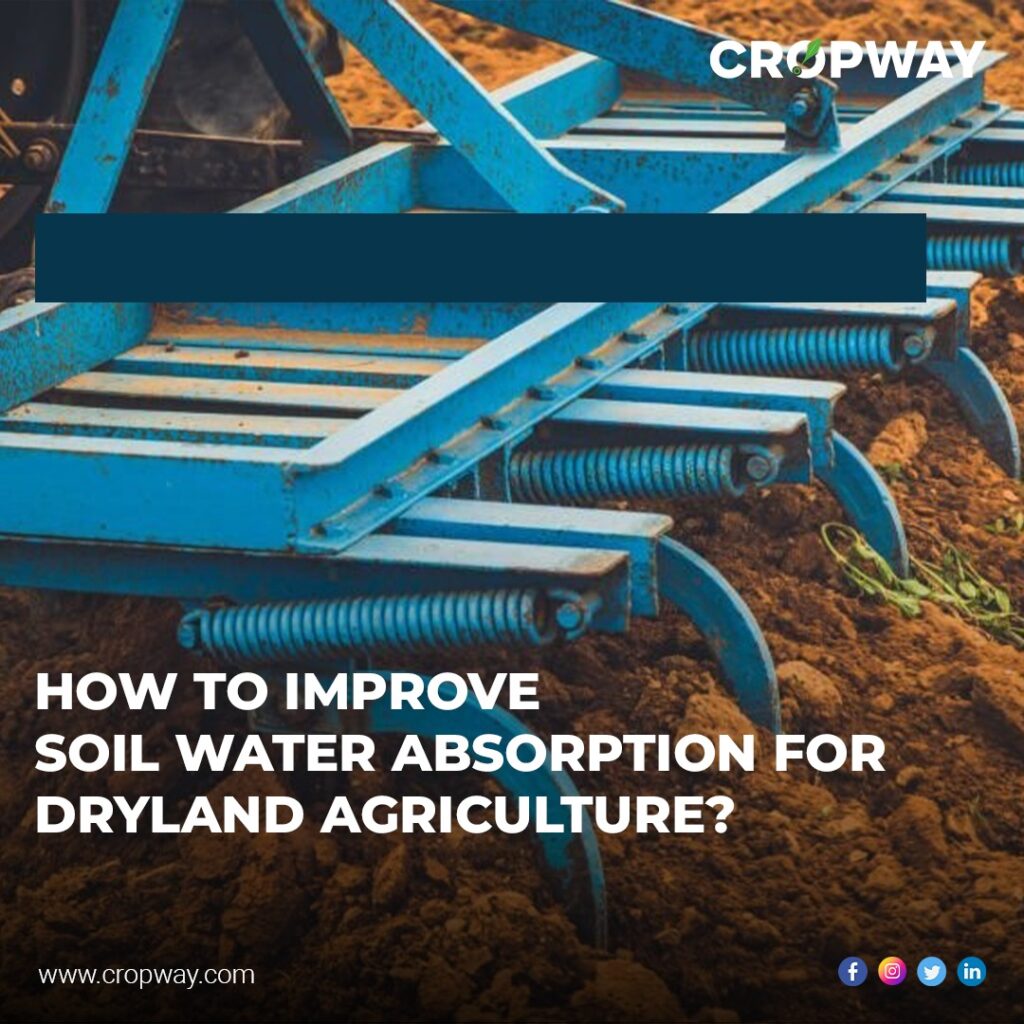
To enhance soil water absorption in dryland agriculture, several practices can be employed. Deep tillage involves loosening the soil, enabling water to penetrate deeper. Contour plowing slows water runoff, promoting absorption. Crop rotation prevents soil compaction and waterlogging issues. These practices collectively enhance moisture retention and distribution in arid regions, ultimately increasing crop productivity and sustainability in dryland agriculture.
Major Crops Grown in Dryland Farming
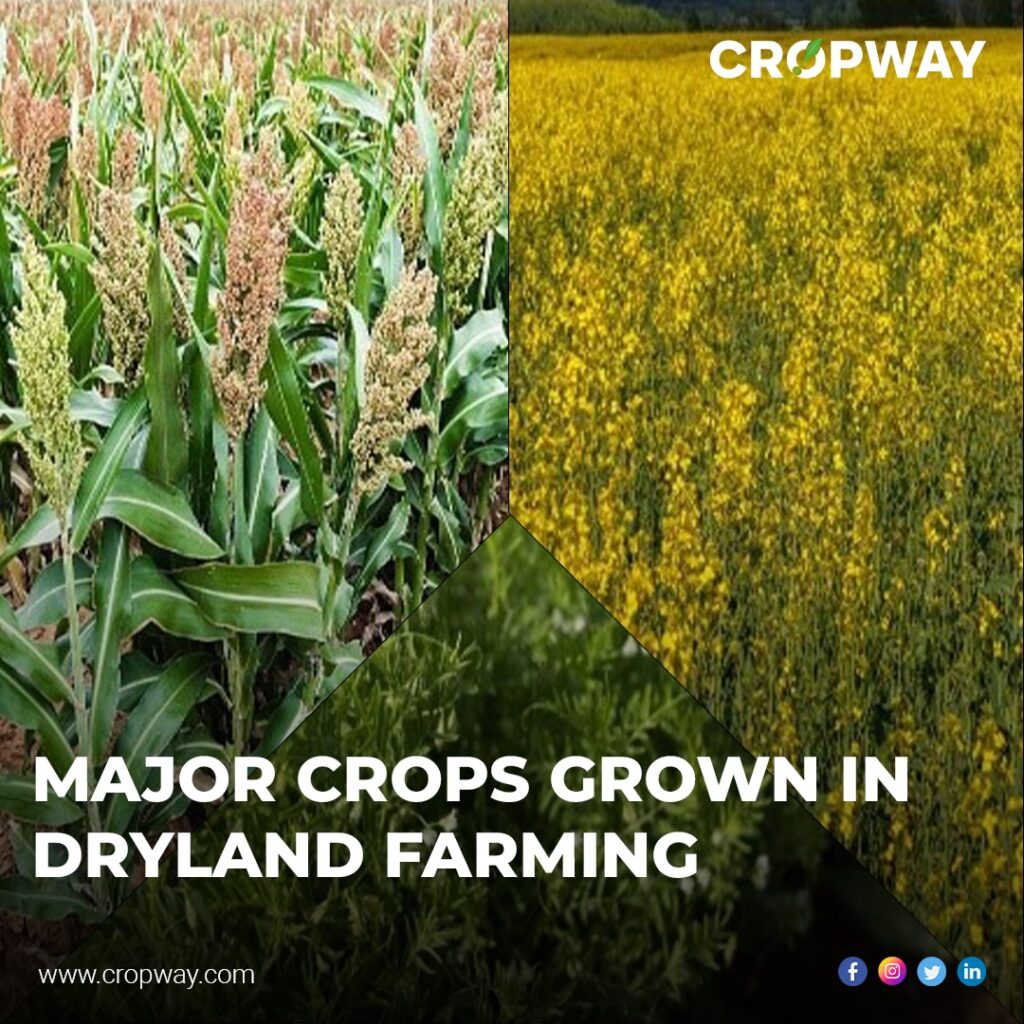
Successful dryland farming hinges on selecting suitable crops tailored to prevailing conditions. Crop choice is pivotal, with some varieties demonstrating greater drought tolerance. Key dry farming crops include millets like Jowar, Bajra, and Ragi, oilseeds such as Mustard and Rapeseed, and pulse crops like Pigeon Pea, Gram, and Lentils. Wheat, Barley, Oats, and Sorghum are also prevalent. Farmers must factor like local rainfall levels, growing season duration, and temperature to make inform crop selection, as these factors significantly impact crop viability in dryland farming systems.
Conclusion
Dryland agriculture necessitates adaptive strategies due to irregular rainfall patterns. Crops must endure extended dry spells and sudden heavy rains, which can trigger erosion. By assessing soil types, selecting resilient crops, and employing appropriate irrigation methods, individuals can engage in dryland farming, maximizing crop productivity in these challenging conditions.

